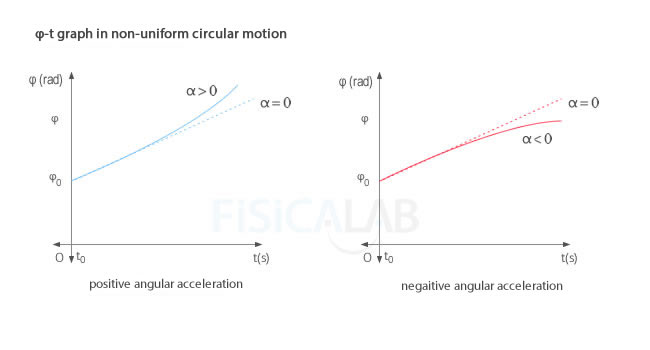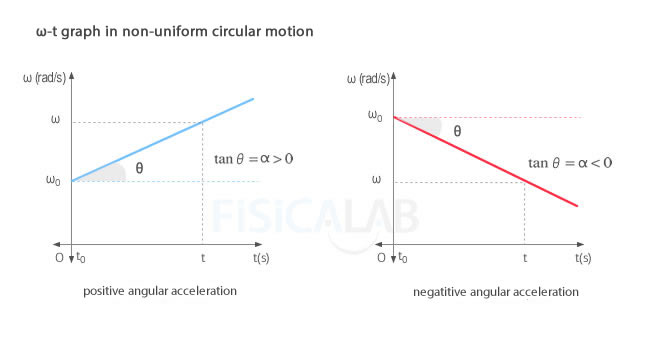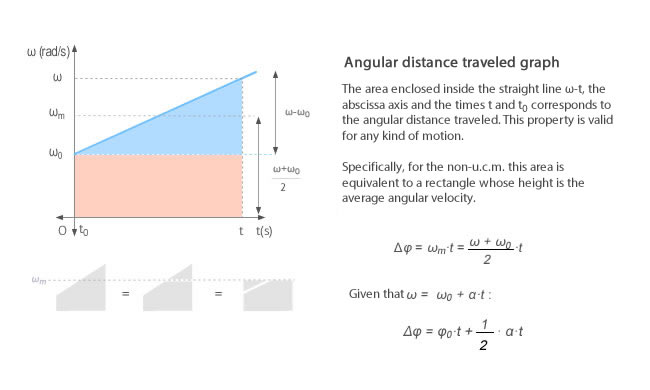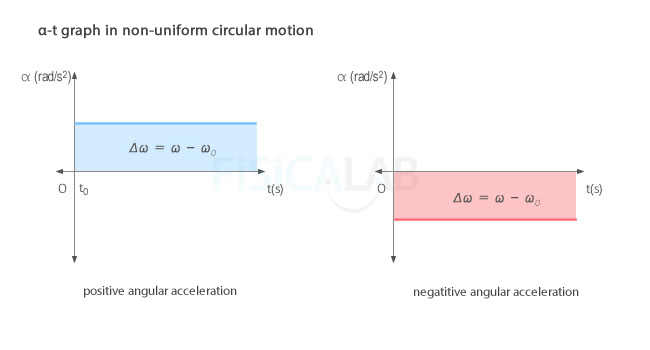A body has non-uniform circular motion when its trajectory is a circumference and its angular acceleration is constant. In this section, we are going to study:
Non-uniform circular motion graphs
Angular position - time (φ-t) graph
The angular position–time graph (φ–t) of a non-uniform circular motion represents time on the horizontal axis (t-axis) and angular position on the vertical axis (φ-axis). The angular position, φ, measured in radians in the International System (S.I.), increases (or decreases) in a non-uniform manner with the passage of time. We can distinguish two cases, depending on whether the angular velocity is positive or negative:

Angular velocity - time (ω-t) graph
The angular velocity–time graph (ω–t) of a non-uniform circular motion (u.a.c.m.) represents time on the horizontal axis (t-axis) and angular velocity on the vertical axis (ω-axis). Angular velocity, measured in the S.I. in radians per second (rad/s), increases (or decreases) in a uniform manner with the passage of time. This is due to the action of the acceleration. Again, we can distinguish two cases:

We can get the acceleration from the angle θ. To do it just remember that in a right triangle the tangent of each of its angles is defined as the opposite cathetus divided by the adjacent one:
The value of the slope is the value of the angular acceleration. So, the greater the slope of the straight line, the higher the angular acceleration of the body.
Notice that the area under the curve ω between two instants of time is numerically the same as the distance traveled. Can you tell why?

The area under the curve can be calculated as the area of the rectangle S1 that would correspond to a uniform circular motion (u.c.m.) to which we will add the area of the triangle S2:
Where we have applied:
Angular acceleration - time (α-t) graph
The angular acceleration–time graph (α–t) of a non-uniform circular motion shows that the angular acceleration, measured in the international system (S.I.) in radians per second squared (rad/s2), is always constant. We can distinguish two cases:

Notice that the area under the curve α, limited by two instants of time, is numerically the same as the experienced increase in the angular velocity. Can you tell why?

